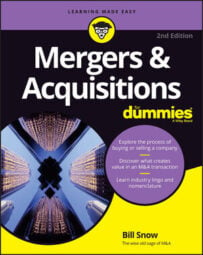Payments over Time
If Seller wants a certain price for the company, Buyer may be willing to pay that price over a period of time. Buyer has the benefit of the time value of money (today’s dollars are worth more than tomorrow’s dollars, so paying today’s debts with tomorrow’s dollars is a benefit to Buyer), and Seller gets to tell everyone that he was able to get the valuation he wanted.Earn-out
The venerable earn-out is a favorite deal component for Buyers because it allows the Seller to prove the company’s profitability. If the company achieves the goals Buyer and Seller agree to, Seller gets the earn-out. Keeping the earn-out metric simple and easy to measure reduces the chances of a dispute down the line. Earn-outs can be based on revenue, earnings, gross profit, or future year valuation.Partial buyout
If a Buyer and Seller can’t agree on a valuation for a full buyout, a partial buyout is often the solution. Seller retains an ownership interest and can sell her remaining shares at some future date and hopefully at a higher valuation. In M&A lingo, this later sale is called a second bite of the apple.Most Buyers want a control stake in the business, meaning they acquire more than 50 percent of the company’s equity. Depending on the situation (and how the purchase agreement is written), however, Buyer may be amenable to buying a minority position.
Sellers who retain a minority position should make sure a put option is part of the deal so that they can sell the remaining equity to Buyer at some future date at some future calculation. If Buyer ends up taking a minority position, Buyer should make sure the deal contains a call option; in other words, Buyer can buy the remaining equity from Seller at some future date at some future calculation.
Stock and Stock Options
Stock can be a great way for a Buyer to help finance an acquisition. If Buyer and Seller disagree over valuation, Seller may be receptive to taking stock in the parent company. The situation is often win-win: Buyer has to lay out less cash at closing, and Seller has the upside potential of stock appreciating in value.Buyer should carefully consider the dilutive effect (owning less of the company) that comes as a result of providing equity to Seller. Also, Seller should consider the marketability of that stock; in other words, does the stock trade on a public exchange, and is the average daily volume sufficient enough to allow Seller to unload his position?
Hire the Seller
Another way Buyers can provide Sellers with added dollars is by including a consulting contract in the purchase agreement. Buyers have the benefit of the Seller’s advice and counsel, and Sellers get the benefit of increased deal value.If a Buyer wants a Seller to stay on board for some period of time after the deal closes, offering Seller a bonus for not leaving can be another way to bridge a valuation gap. Buyer gets the security of knowing he won’t have to pay the bonus if Seller resigns early, and Seller knows she’ll receive added money by simply staying put.

